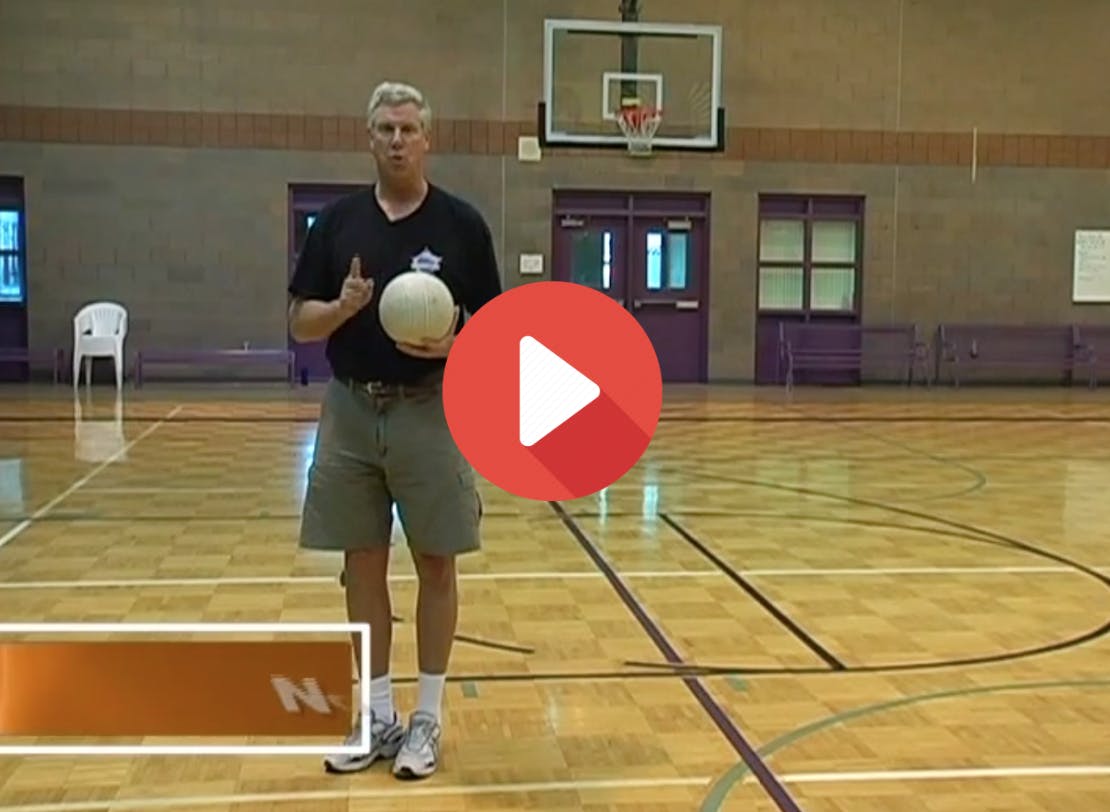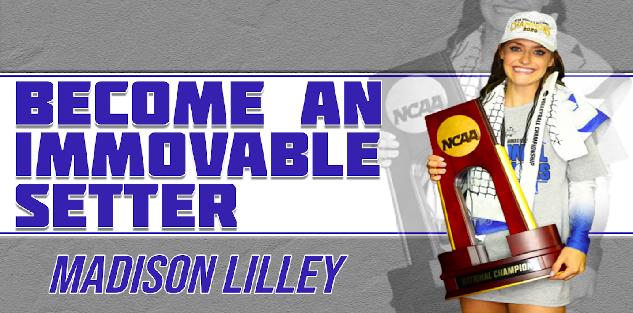Featured courses
- Volleyball Passing Drills to Win More Matches by Jackson Chlebowy
- Volleyball Serving Made Simple: Drills for Coaches and Athletes by Jackson Chlebowy
- Mastering the 5-1 Rotation in Volleyball: A Comprehensive Guide by Grant Young
- Master the Perfect Volleyball Approach – Jump Higher & Hit Harder by Sam DeJoseph
- Dominate the Net – 5 Must-Try Drills for Pin Hitters by Sam DeJoseph
- Three Small Group Training Drills to Improve Your Volleyball Team by Grant Young
- How to Teach Serving Volleyballs by Grant Young
- How to Make Your Volleyball Practices More Game-Like by Grant Young
- Three Volleyball Drills to Round Out Your Team’s Skills by Grant Young
- JUMP Serve into a Win by Eric Mahnke

How to Teach Serving Volleyballs
- By Grant Young
Teaching volleyball players how to serve can be a deceptively daunting task.
Regardless of what level you’re teaching at, there’s a good chance that your players have already picked up poor serving habits and techniques that could cost your team when the games get underway. And if these habits aren’t quelled by a coach, they’re only going to worsen over time.
Volleyball serving drills are a great way to hone your players’ serving skills. But in order for these drills to make an impact during the game, you need to get crystal clear on how to actually teach your players how to serve the volleyball.
This is why we've compiled a few of the best lessons on serving the internet has to offer. These three courses will give you a great idea of how to develop your volleyball players’ respective serves and help fix any flaws they have accrued on past teams.
And because these courses are taught by elite coaches who have decades of experience under their belts, you can be sure that their teachings have produced innumerable aces.
Volleyball Serve: Basic Serving Technique
Allison Lebar has enjoyed great success during her tenure as the varsity girls' volleyball coach at Riverdale Country School in New York. She consistently led her program to the New York state tournament and helped many of her players achieve their dreams of playing volleyball at the collegiate level. Her ‘Volleyball Tips & Drills Video Library’ course contains some exceptional tidbits on how to teach the serve effectively.
Coach Lebar notes that there are three basic elements to the serve. The first is the step, the second is the toss, and the third is the way the server moves their arm.
When it comes to the step, an important point Coach Lebar makes is that players must take a normal, natural step when serving. Many players have a tendency to over-step when serving, which can cause them to fall off balance and deliver a poor ball.
During the tossing portion of the serve, it’s crucial that the player toss the ball directly in front of them. Coaches often notice that some players have developed the habit of tossing the ball closer to their serving hand because they think that will make for a better serve. But doing so actually increases the chances the serve won’t be hit clearly.
And the third portion of the serve is the way the server moves their arm. For this, Coach Lebar suggests that the server bring their arm back behind their head and then extend to the top of their reach to make contact. In addition, the server should not stop their swing at the point of making contact and instead follow through straight in front of her body.
Float Serving

Pat “PP” Powers is considered one of the world’s best volleyball coaches. He spent six seasons as Head Men’s Volleyball coach at the University of Southern California, winning 100 matches and twice coming within one win of the NCAA Volley Four.
But Coach Powers’ playing career is even more impressive. Among his many accolades is winning a gold medal at the 1984 Olympics, along with being only one of three players in the world who has won both an indoor and an outdoor world championship.
His ‘Volleyball Tips and Techniques’ course includes a good few coaching tips that only someone who has both coached and played at the world-class level could know.
Among these include how to execute a float serve. A float serve is volleyball’s version of a knuckleball, where the ball is jump-served and moves in unpredictable ways that make it hard for opponents to return it.
When doing a float serve, Coach Powers notes one should make a concerted effort to not spin the ball at all when serving. The reason for this is that the server should want to take all control off of the ball, thus maximizing its unpredictable movement after it’s struck.
In addition, Coach Powers notes that the first thing the server should do before executing the float serve is to locate the needle insertion point on the ball, and position that on the other side of where they’re going to hit the ball. The reason for this is that needlepoint weighs more than anything else on the ball, and therefore the ball will move more effectively and unpredictably if this point is positioned away from you.
When it comes to making contact with the ball during a float serve, rather than hitting it with the fingers that will create spin, Coach Powers suggests the player hit it with the palm of their hand (specifically, in between the two bones right at the beginning of one’s hand) instead.
Serving
2024 was Coach Genny Volpe’s 21st season as the head women’s volleyball coach at Rice University in Texas. Genny Volpe has established the Owl volleyball program as a power in the Southwest, having taken them to eight NCAA tournaments (2004, 2008, 2009, 2018, 2019, spring 2021, fall 2021, 2022), the only eight appearances in Rice's history.
Coach Volpe’s ‘Game Ready! Implementing Game Situation in Daily Practice’ course contains a few excellent tips on teaching serving practice in a way that will help players retain that information.
One way Coach Volpe does this is by creating game-like serving drills. An example of this is when Coach Volpe divides her roster into two different teams and has them competing against one another with their serves.
This can be done in multiple different ways. A coach can have their players aim for a specific section on the court, and tally all the times they serve it in that section, a radar gun could be used and the team with the highest average velocity wins, or any other creative way a coach can come up with.


